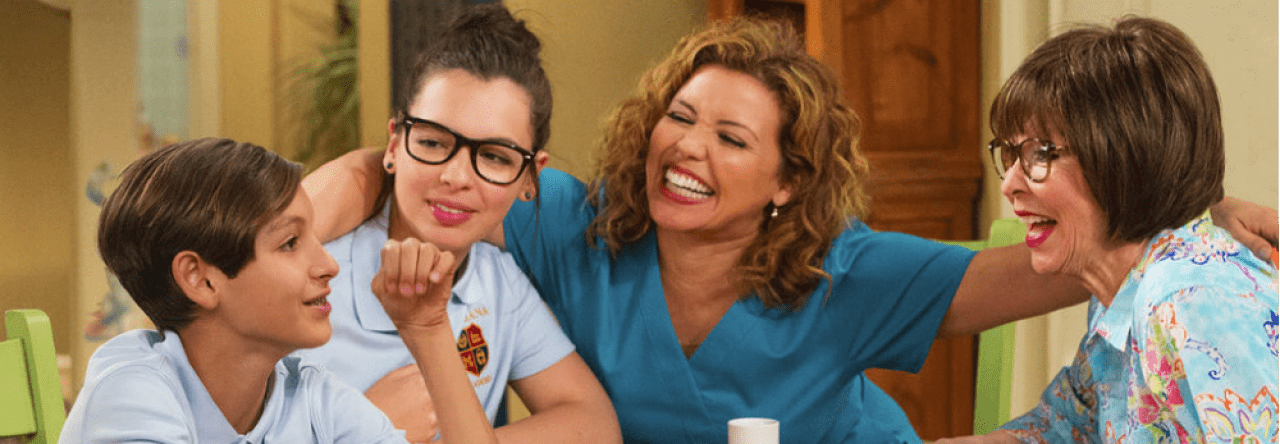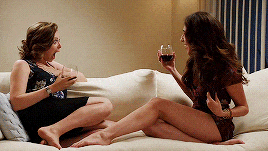Source 1: Allan, K., & Coltrane, S. (1996). Gender display in television commercials: A comparative study of television commercials in the 1950s and 1980s. Sex Roles, 35(3), 185. Retrieved from http://prx.library.gatech.edu/login?url=https://search.proquest.com/docview/1308101890?accountid=11107
There are two main research questions that this study investigates. The first is whether gender representation has changed in television commercials from the 1950s and 1980s, and the second is when and how often nontypical gender presentation occurred. While the ratio of female to male main characters decreased over time and many of the commercials’ narrators remained male, women’s representation changed in terms of activity. In the 1980s, a greater percentage were seen working, as opposed to parenting, and in a greater variety of jobs too. Nontypical gender display improved for women and decreased for men over time, and activity/work was the most significant factor in how masculine or feminine a character appeared.
This may not be about children’s television, but this is still a relevant read because commercials are an important aspect of TV, and children watch more than what’s specifically marketed toward them. Plus, in understanding how commercials handled gender in the 1950s through the 1980s, both through its own data and the results of other, related studies, it provides perspective on how TV’s handling of gender now reflects in the grander scheme of time.
Source 2: Berg, Leah R. Vande and Diane Streckfuss. “Prime-Time Television’s Portrayal of Women and the World of Work: A Demographic Profile.” Journal of Broadcasting & Electronic Media, vol. 36, no. 2, Spring92, p. 195. EBSCOhost, prx.library.gatech.edu/login?url=http://search.ebscohost.com/login.aspx?direct=true&db=syh&AN=9208170546&site=ehost-live.
This journal article’s aim was to examine the portrayals of women and men in the workplace, in terms of both representation and activity, on primetime TV during the 1980s. For both analyses, the same set of variables were used. Male characters were found outnumbering female characters in both representation and workplace activity. Male and female characters were more commonly seen in different types of industries. Female characters were less likely to be high up in the workplace’s power hierarchy—and when they were, they performed less actions than male characters did in the same positions—and they were more likely to be depicted as students and home caretakers.
This source is a valuable one in examining how gender representation has evolved in children’s TV over multiple decades. The analyses conducted identify trends in an important aspect of representation on TV—the workplace—and the article is helpful in clarifying how the identified trends compare to previous research. While the research was on primetime TV and not children’s TV, primetime TV is still watched by children, and primetime TV affects children’s TV’s programming, so these trends are worth considering when evaluating children’s TV’s evolution.
Source 3: Case, S. (2015). Tough turtles and pretty princesses: A content analysis of gender representations in popular children’s media (Order No. 1587267). Available from ProQuest Dissertations & Theses A&I; ProQuest Dissertations & Theses Full Text. (1679935870). Retrieved from http://prx.library.gatech.edu/login?url=https://search.proquest.com/docview/1679935870?accountid=11107
This study sought to answer several questions. It explored gender representation in the top-rated children’s shows of 2014 and whether representation differs by preschool versus school-age shows, animated versus live action shows, TV networks, and gender makeup of the shows’ audiences. Overall, 60% of characters in these shows were male and 40% female. School-age shows tended to have more balanced gender representation than preschool shows, and live action shows had more balanced representation than animated shows. In preschool shows and animated shows, there were more male characters portrayed. In comparing Disney Channel, Nickelodeon, and PBS, Disney had the most equal representation, and Nickelodeon—by a slight margin—had the least balanced, most male-dominated representation. More teenage characters were female on children’s TV, but more child and adult characters were male. Female characters’ behaviors included more gender stereotypes than behavior in male characters.
This source has a lot of relevant data on gender representation in children’s TV today. It’s especially helpful in how it analyzes children’s TV shows by many variables. However, the amount of data present can be overwhelming, and it can be hard to pick and choose which data is relevant.
Source 4: Mary, S. L. (2001). Interactions, activities and gender in children’s television commercials: A content analysis. Journal of Broadcasting & Electronic Media, 45(1), 41-56. Retrieved from http://prx.library.gatech.edu/login?url=https://search.proquest.com/docview/227290365?accountid=11107
This source examined gender representation and portrayal in commercials that air during children’s TV shows. Of identifiable characters, there was no significant difference in the number of girls and boys portrayed. Significantly less commercials are girls-only than boys-only, and in mixed commercials, there were slightly more boys than girls. The settings were statistically different based on the gender makeup of the commercials, and so were the interactions featured between characters. Activities performed also varied significantly between commercials; girls-only commercials featured more playing and less eating than either boys-only or mixed commercials. Finally, the presence of violence and aggression, and the product types advertised, differed significantly depending on the commercials’ gender makeup.
This source is very valuable for determining how gender presentation has evolved in children’s TV. Commercials are an integral aspect of TV, as the study points out, so this study is relevant to the question. This study has a fair amount of data, and yet the study summarizes it well. This study’s discussion section also does a great job of connecting their results to previously-obtained results, which allows for a better understanding of how gender representation has actually evolved over time.
Source 5: Signorielli, Nancy, and Aaron Bacue. “Recognition and Respect: A Content Analysis of Prime-Time Television Characters Across Three Decades.” Sex Roles, vol. 40, no. 7, 1999, pp. 527-544. ProQuest, http://prx.library.gatech.edu/login?url=https://search.proquest.com/docview/225370372?accountid=11107.
This study examined the recognition and respect that were demonstrated to male and female characters to evaluate whether there’s been any change in gender portrayals from primetime TV in the 1970s to the 1990s. It was found that while women remained underrepresented by the 1990s, representation had significantly improved from during the 1970s. Women appeared most frequently in sitcoms and least in action adventures. Consistently, female characters were judged as being younger than male characters. More male than female characters were portrayed as having work outside the home consistently, though this difference decreased over time. The percent of women working outside the home increased from the 1970s to the 1980s before stalling in the 1990s. Representation of gender-nontypical work for both male and female characters increased from the 1970s to the 1980s before decreasing again in the 1990s.
This source was an informative read. One thing it did especially well was contextualize the changes in social history that occurred from the late 1960s to the 1990s to explain the study’s importance. While this wasn’t about children’s TV, it’s likely that the same trends were present in children’s TV from the 1970s-1990s and influenced children’s TV today.
Source 6: Steyer, I. (2014). Gender representations in children’s media and their influence. Campus – Wide Information Systems, 31(2), 171-180. doi:http://dx.doi.org/10.1108/CWIS-11-2013-0065
This source summarizes research done on gender representation in different forms of children’s media—literature, TV and commercials, the Internet, and computer program—spanning multiple decades. For TV and commercials: one point made was that women have historically been underrepresented, with representation decreasing from the 1930s-60s and increasing from the ‘60s to the ‘90s. Another point made was that women are typically portrayed as more physically attractive and intelligent than men, and that women are seen more as mothers and significant others while men are seen more as single. The last point made was that children have the potential to conform to the stereotypical or nontypical behaviors reflected in TV.
This source, overall, provides valuable information. It provides information on a variety of children’s media, which is helpful in linking trends in children’s TV to children’s media in general. The source is also concise and not difficult to read. One issue that is noticeable is that it is inconsistent in mentioning or not mentioning the decades that the identified trends span from. Overall, though, this provides relevant background and topical knowledge on how gender representation has evolved in children’s TV over time.




